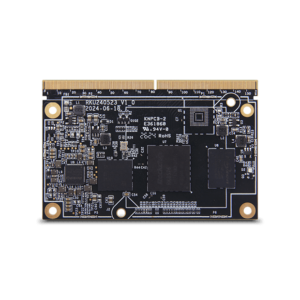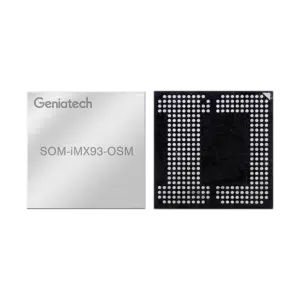Understanding System on Module (SoM) and Its Applications in Embedded Systems
Understanding System on Module (SoM) and Its Applications in Embedded Systems
Blog Article
The quick development of engineering has pushed substantial inventions in embedded techniques, certainly one of that is the system on module manufacturers Working as a bridge between custom technology and off-the-shelf adventures, the SoM is redefining how designers approach embedded program design. That blog shows the primary comprehension of a Process on Module and its rising programs in a variety of industries.

What's a System on Element (SoM)?
A Process on Element (SoM) is just a lightweight, ready-to-use panel that integrates most of the key the different parts of a method on a single module. That on average includes the processor, memory, power management products, and sometimes additional peripherals like Wi-Fi or Ethernet. Unlike a traditional single-board computer, an SoM does not come with connections and screen ports pre-installed, indicating it should be along with a service panel to create an entire system.
Made to streamline growth workflows, the modular character of an SoM allows developers to miss the delicate means of planning and building every individual aspect from scratch. By adopting an SoM, companies can concentrate more on the application-specific functions of the products.
Advantages of Applying System on Component
The integration of an entire process on a singular component presents many benefits. First, it dramatically decreases enough time required for solution development. Pre-tested adventures assure security, saving weeks of work for design teams.
Additionally, the scalability of an SoM enables firms to regulate efficiency levels predicated on task requirements. For example, a low-cost alternative can quickly range in to a high-end product by changing the model in the component while keeping the provider table design. This method reduces engineering risks while selling long-term cost-efficiency.
Lastly, the consistency of an off-the-shelf element assures large compatibility with present instruments and frameworks, which makes it well suited for both small startups and large enterprises seeking to hit the industry quickly.
Important Applications of SoM in Stuck Techniques
The utilization of System on Modules spans several high-demand industries including although not restricted to medical products, automation, and consumer electronics.
Medical Devices
Reliability and consistency are paramount in healthcare. Process on Modules with secure handling features are stuck in monitors, imaging devices, and portable diagnostic tools.
Commercial Automation
Sturdy and energy-efficient, an SoM is a must for commercial get a grip on methods and autonomous robotics. Their scalable structure helps high-speed information running and IoT connectivity.
IoT Devices

Client services and products like intelligent thermostats, wearable units, and actually home personnel incorporate an ultra-compact Program on Component for easy performance.
The System on Element continues to get grip because of its paid off complexity and versatility, cementing itself as a future-proof alternative in the embedded methods sphere. Industry leaders already are leveraging these adventures, and their range is likely to expand even more as engineering evolves.
Report this page